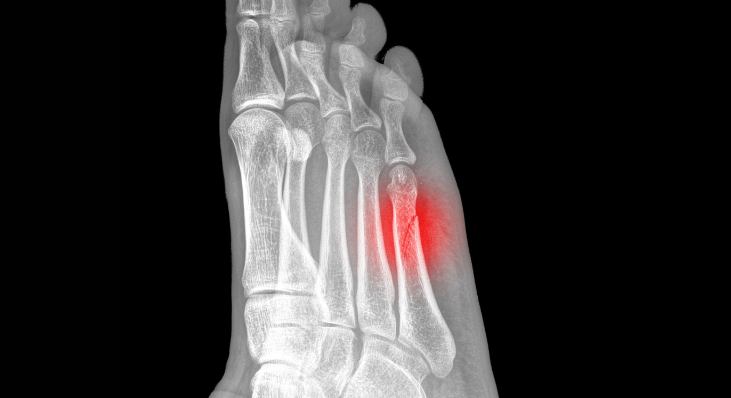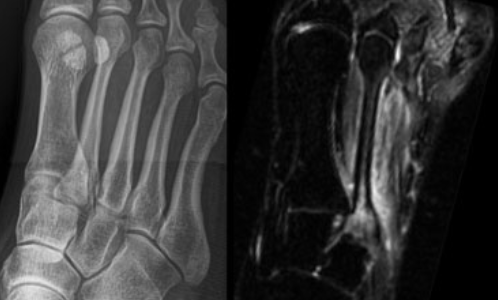Written by medical experts, this article aims to help you understand the signs and symptoms of stress fractures. Use our comprehensive “Do I Have a Stress Fracture? Quiz” to get insights, but remember to seek professional medical advice for an accurate diagnosis. Let’s journey into the world of stress fractures.
Introduction: Stress Fractures – A Silent Pain
Repetitive force or overuse can sometimes lead to what we call a stress fracture. Often suffered by athletes but also common in non-athletes, stress fractures are tiny cracks in the bone. If left untreated, they can lead to complications.
Do I Have a Stress Fracture? Decoding the Symptoms
Identifying a stress fracture can be tricky. However, some symptoms can provide clues. Pain that intensifies with physical activity but eases with rest, swelling, tenderness to touch, and visible bruising are some signs to watch for.

It’s crucial to consult a medical professional if you notice any of these symptoms persistently. This brings us to our stress fracture self-assessment.
A majority of “yes” responses may indicate a potential stress fracture. However, for an accurate diagnosis, please consult a healthcare professional.
Delving Deeper: The Causes and Complications of Stress Fractures

Stress fractures can occur due to repetitive force, increased physical activity, or changes in surface. They’re common in weight-bearing bones of the foot and lower leg, especially in athletes. However, non-athletes can also develop stress fractures.
If untreated, stress fractures can cause long-term health problems. It could lead to complete fractures or chronic pain and even impede your ability to perform day-to-day activities.
Decoding the Diagnosis and Treatment Options

Your healthcare provider will likely order imaging tests, like X-ray, MRI, or bone scan, to diagnose a stress fracture.
Treatment typically involves rest and refraining from the activity that caused the fracture. Depending on the severity, your doctor might recommend a brace or footwear to reduce stress on your foot or leg. In some cases, surgery might be necessary.
Prevention: Your Best Defense Against Stress Fractures
Prevention is always better than cure. Building up your activity level gradually, maintaining a healthy diet rich in calcium and Vitamin D, using appropriate gear, and cross-training can significantly reduce your risk of stress fractures.
A Closer Look: The Anatomy of Stress Fractures

To further understand the issue at hand, it’s necessary to dive deeper into the details of stress fractures. Stress fractures are usually caused by overuse or repetitive activity and are common in high-impact sports such as running, basketball, or gymnastics.
These small cracks in the bone develop when the muscles become fatigued and are unable to absorb added shock. Eventually, the muscle transfers the overload of stress to the bone, causing a tiny crack or stress fracture.
The Role of Osteoblasts and Osteoclasts in Stress Fractures
The process of bone remodeling is carried out by two types of cells: osteoblasts, which build up the bone, and osteoclasts, which break down the bone. When the body experiences repetitive stress, the balance between these two can get disrupted.
Under normal circumstances, osteoclasts break down bone tissue, and osteoblasts build it back up. However, with repetitive stress, the osteoclasts may break down bone faster than the osteoblasts can rebuild it, causing a stress fracture.
Stress Fractures: Are You At Risk?

Several factors can increase your likelihood of developing stress fractures. These include:
- High-Impact Sports: Athletes participating in track and field, basketball, tennis, gymnastics, or any sport that involves running or jumping are at a higher risk.
- Increased Activity: Suddenly increasing the duration, intensity, or frequency of physical activity can contribute to the development of stress fractures.
- Bone Insufficiency: Conditions like osteoporosis weaken bones and make them more prone to fractures.
- Poor Nutrition: Lack of nutrients like Vitamin D and calcium can weaken your bones, making them susceptible to stress fractures.
- Foot Problems: Flat feet or rigid, high arches can alter the mechanics of your foot, leading to stress fractures.
- Previous Stress Fractures: If you’ve had one or more stress fractures, you’re at a higher risk of having another.
Stress Fracture Vs. Shin Splints: Know The Difference
Stress fractures and shin splints are both overuse injuries that are common among runners. However, they’re different conditions.
Shin splints cause dull pain along the inner part of the shinbone, whereas stress fractures are a small crack in the bone that causes sharp, localized pain. The pain from shin splints usually decreases after warming up, while the pain from a stress fracture gets worse with activity.
More Than Just Pain: The Psychological Impact of Stress Fractures
Stress fractures can have psychological impacts as well. In athletes, especially, the need to take time off for recovery can lead to feelings of frustration, depression, or anxiety.
Therefore, the treatment of stress fractures should also consider the mental and emotional health of the patient. Mental health professionals, such as psychologists or psychiatrists, can provide essential support during the healing and recovery process.
FAQs About Do I Have a Stress Fracture? Quiz
- What is the difference between a stress fracture and a regular fracture?
A regular fracture refers to a complete or partial break in the bone, while a stress fracture is a tiny crack due to repetitive force or overuse.
- Are stress fractures more common in certain bones?
Yes, they are more common in the weight-bearing bones of the lower leg and foot.
- Can stress fractures occur in multiple bones at the same time?
Yes, it’s possible, especially if the cause of the stress fractures, like overuse, impacts multiple bones.
- Are stress fractures more common in certain age groups?
While stress fractures can occur at any age, they’re more common in active adolescents and young adults. However, postmenopausal women are also at higher risk due to decreased bone density.
- Can stress fractures recur after healing?
Yes, if the underlying cause, like overuse or insufficient recovery time, is not addressed, stress fractures can recur.
Also Read: Best Way to Sleep With Lower Back Pain [Tips & Suggestions] 2023
The Final Verdict: A Word of Caution
While we hope that our “Do I Have a Stress Fracture? Quiz” and this comprehensive guide have given you some valuable insights, it’s crucial to remember that they are no substitute for professional medical evaluation. If you suspect you may have a stress fracture, please contact your healthcare provider immediately.
Remember, a timely diagnosis can make all the difference in ensuring a rapid and complete recovery. Don’t let the pain hold you back; take action and take care of your health!
Note: The content of this article is reviewed and validated by a team of medical professionals with expertise in orthopedics and sports medicine. While we aim to provide accurate, clear, and trustworthy information, we remind our readers that this information should not replace professional medical advice. Always consult a healthcare professional for accurate diagnosis and treatment.
Iva Ort is an ingenious wordsmith and captivating blogger whose tales leap off the screen and into your imagination. With a pen as her wand, she weaves enchanting stories and insightful articles, leaving readers spellbound and craving more.

